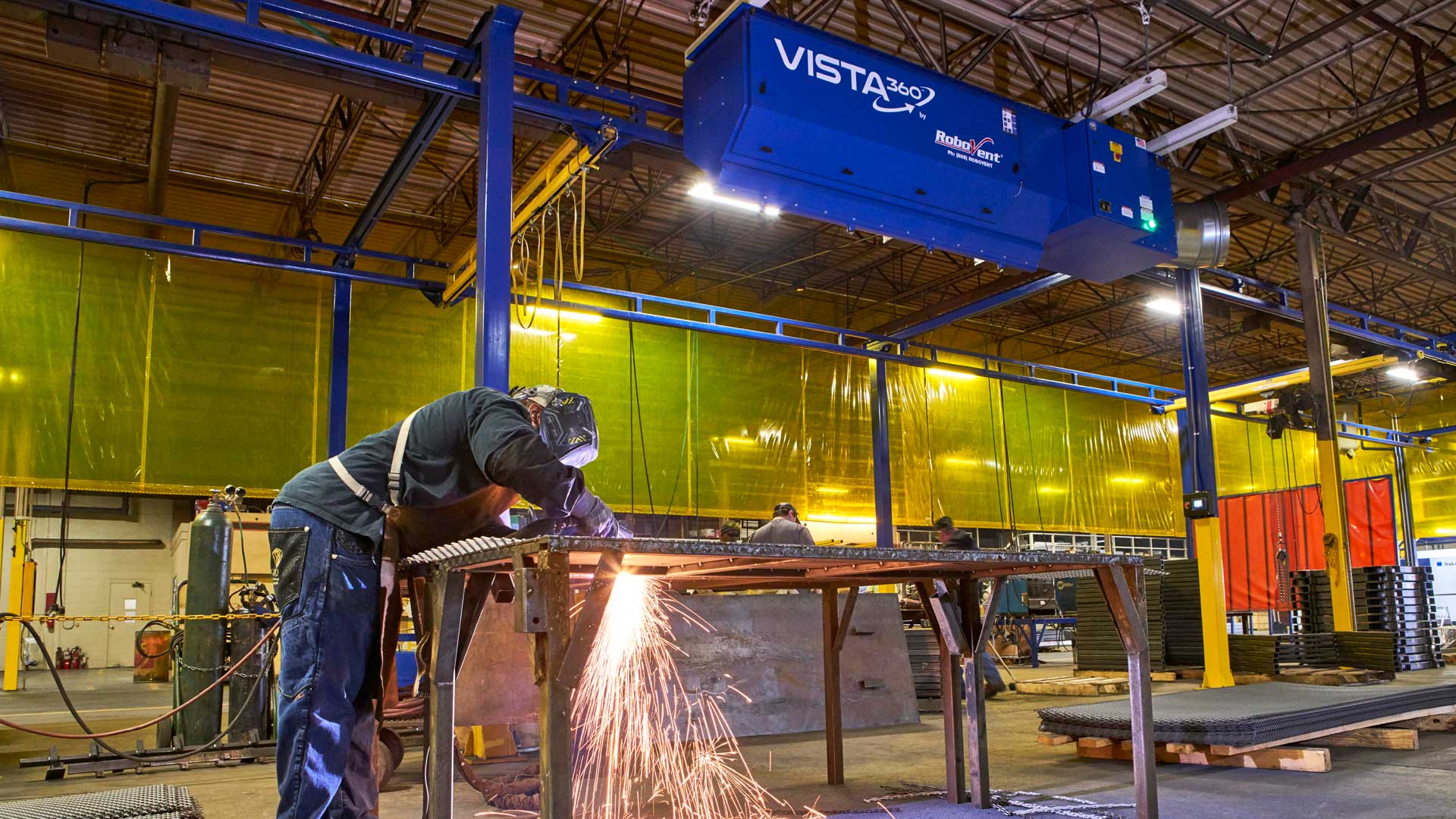Air Quality Options for the Automotive Industry

Understanding Ventilation Options for Automotive Manufacturing Processes
No matter what kinds of processes you are using, IAQ mitigation options all fall into a few broad categories. You can think of these along a two-dimensional matrix:
- Filtration vs. exhaust: Exhaust and makeup air systems simply push dirty air out of the facility and pull clean(er) air in. Filtration systems pull dirty air into a dust collector where particulates are filtered out before clean air is returned to the facility. Filtration is usually the better option for facilities with high volumes of particulates and temperature-controlled indoor environments.
- Source capture vs. ambient: Source capture systems collect particulates close to the source as they are generated, before they escape into the ambient air in the facility. Ambient systems turn over air for the entire facility. Source capture is usually preferable where possible; the less air you need to move, the more energy and cost efficient fume capture will be. Source capture options include hoods and canopies, fume arms, fume guns, robotic tip extraction systems, and backdraft or downdraft tables. Ambient options include traditional ducted push-pull systems, stand along ambient air filtration units like the RoboVent Spire360™ Series or ductless ceiling mounted options like RoboVent Vista360™.
The right choice depends on the specific applications you are using (e.g., welding, cutting, grinding, machining), whether your processes are manual or robotic, how easily production processes can be enclosed and the volume of dust, or fumes your processes produce. Here are some guidelines for choosing air quality solutions for automotive manufacturers and Tier I and II parts suppliers.
Manual and Robotic Welding
High-production robotic welding of smaller automotive parts is usually done under a hood. When working on larger weldments that cannot be easily hooded, robotic fume extraction is sometimes an option. However, resistance welding of frames and body components generally requires an ambient solution. Manual welding for small parts can be done on a backdraft table or under a fume arm to pull fumes away from the welder’s breathing zone. For large manual weldments, a fume gun like the RoboVent Extractor may be the best choice.
Machining
Machining for engine parts and other precision automotive components usually involves the use of lubricants. These metalworking fluids create dangerous oil mists when heated by high-speed machining processes. Specialized collection equipment and filters must be used for oil mists; regular filters quickly become saturated and ineffective when oil mists are mixed with dry particulate. Packed bed filters, also called coalescing filters, are the most effective filters for most oil mists.
Cutting and Grinding
Downdraft tables are effective for many manual cutting and grinding applications. Laser and plasma cutting produce large volumes of dust that must be controlled to avoid damage to the equipment itself and reduce combustion hazards. A hooded enclosure ducted to a high-powered dust collector is best to keep these dusts under control.
Thermoplastic Injection Molding
Air quality control for thermoplastic injection molding must consider all of the parts of the process, from raw material handling to final production of the plastic components. Plastic dusts are not only dangerous but also combustible, so preventing buildup in the air is essential. High-powered ventilation can sometimes be used in areas where raw pellets or powders are moved, poured, mixed and processed. If dusts can be contained to a smaller area, source capture filtration systems can be designed using an intake plenum or hood over the processing point ducted to an NFPA-compliant dust collector.
Employees working inside the enclosed area should also wear personal protection when working directly with the materials. The molding process itself produces fumes rather than dusts. An ambient filtration system can be used to collect plastic fumes as they rise. If the plastic processing area cannot be fully enclosed, local containment may be achieved by partitioning the area from the rest of the facility and maintaining negative air pressure to prevent fumes from escaping.
Rubber Manufacturing
Ambient filtration is generally needed for tire production and other rubber manufacturing processes to meet both health and safety and environmental regulations regarding volatile organic compounds. Source capture can sometimes be used when processes can be enclosed.
Read more about best practices in air quality management for the automotive industry.
Contact Us With Your Questions!
SUBSCRIBE TO
BLOG UPDATES









